![]() Every month, I profile an artist who inspires my own art,
Every month, I profile an artist who inspires my own art,
in several segments.
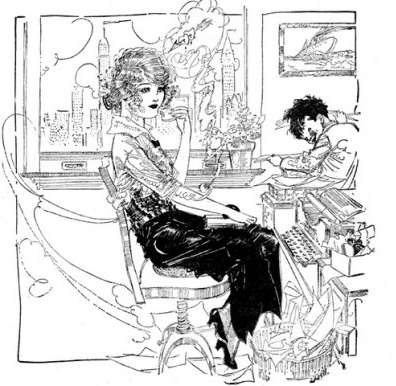
In the 1910s, Nell Brinkley was one of many young women who flooded the workplace. Knowing personally the hard work and long hours these women put into their jobs, she enthusiastically sang their praises and passionately defended them against critics who disapproved of women earning wages.
One such example accompanies the illustration titled “Careers” (view it larger), which depicts a mother and child with a musician, ceramic artist, writer, and singer (quoted in Nell Brinkley and the New Woman in the Early 20th Century by Trina Robbins, pg 63-4):
Loyally we put the mother-career where it belongs – under a halo, in the full, fair shine of the “spotlight”: but in these days you dare not sniff at any of the others that girls aspire to. Because – these are times when girls are expected to, and expect to, care for mothers and fathers growing old; when girls dream of mother having the silk dress and petticoat that are her beau ideal, and go out to earn them; when girls lift their eyes to some coveted ease for the Dad that has trudged, machine-like, back and forth on the same trail in an endless circle of seasons; when girls toss at night with the unrest of ambitions that used only to stir boys’ hearts – the dream of uplifting head and shoulders above the level; when girls educate and help dress small sister and brother nestlings; when girls – more often than I like to believe – keep an open purse for the dipping hand of a broad-shouldered brother or two – a small, soft Atlas with the great lump of an idle world on her shoulders! So put a finger over your lips when next you begin to whisper disdain of any girl-career that is not the mother one…. Is she so different from you – a fellow – now that she’s taken the trail ‘long side of you? She has the same aspirations, the same spurs that rowel her ambition and send it up and up, the same weariness, the same rewards. And just as you do, she gets money for the talent she markets.
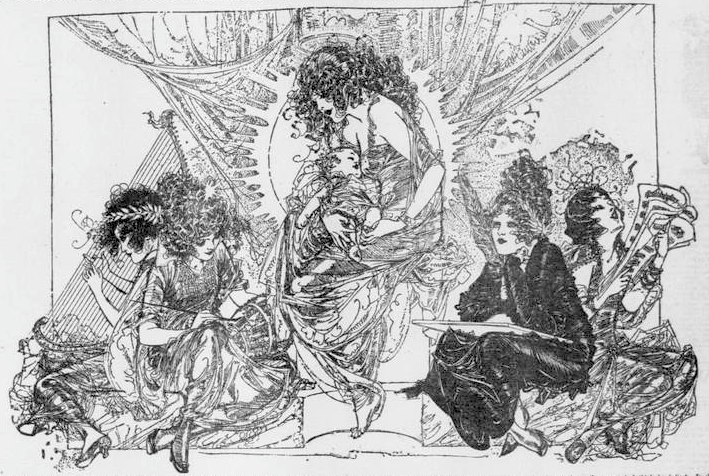
Similarly, for the illustration “Tug of War”, Brinkley remarks that men fall in love with both “the girl of leisure” and “the girl who must toil with brain, or sometimes with weary little hands and feet for the clothes that cover her brave shoulders and the butter that goes on her bread.” As Trina Robbins points out, the privileged women treat this tug of war (over respectability and love) as a game, but the working women don’t have time for silliness – they have food to put on the table.
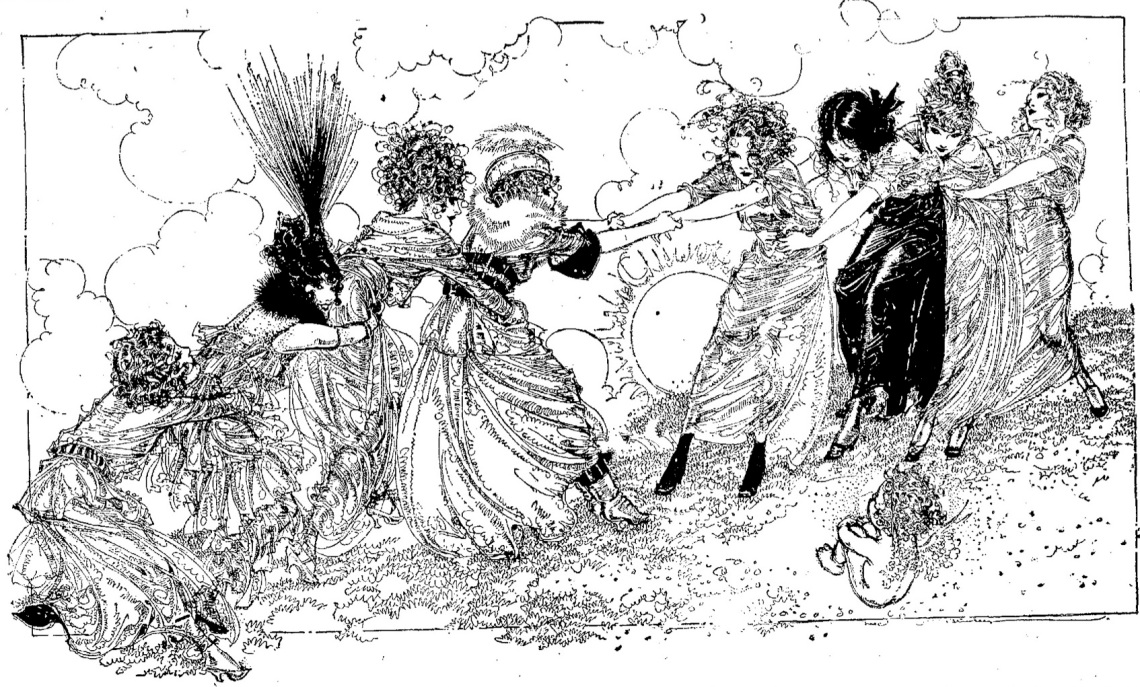
Next up is a two-panel comic showing a girl who dreams of fame as an artist, and then stays up all night drawing. Brinkley writes below the comic that “PLAIN OLD WORK” is the key to success.
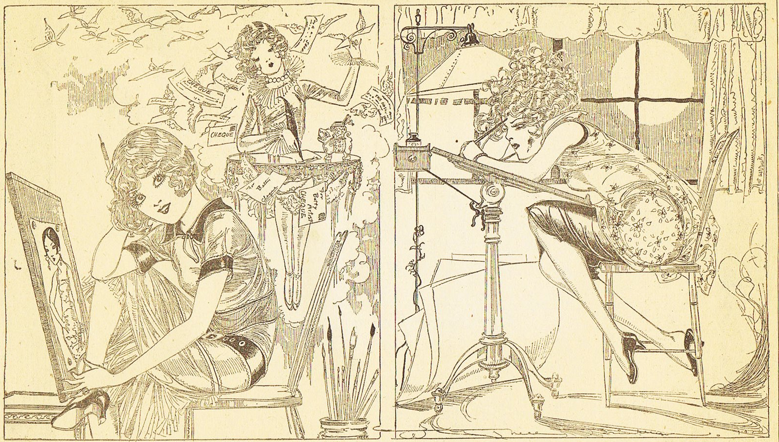
Lastly is “The Three Graces” from 1916 (view it larger), which shows three women who represent Suffrage, Preparedness, and Americanism. As a woman who worked outside the home, Brinkley naturally supported the right of women to vote and participate in politics to protect themselves as workers. The accompanying caption reads: “Any man who reveres his mother and his country should idolize, if he worship at all, Suffrage, Preparedness, and Americanism.”
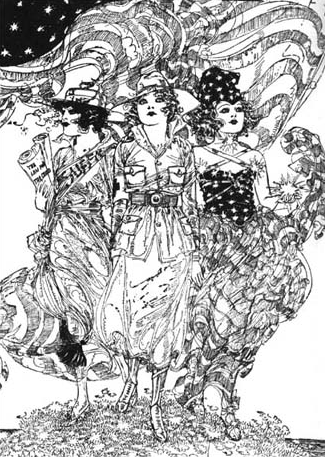
This illustration is simply genius. In one fell swoop, Brinkley accomplishes three things: she replaces the ugly spinster stereotype of suffragists with beautiful young women; she associates woman suffrage with American patriotism; and with Preparedness, she reminds everyone that if America enters World War I, women’s full participation in all areas of life will make America stronger. Genius!
All of these women are examples of “the Brinkley Girl”. Next week I will present “Golden Eyes”, the most famous of Brinkley’s characters, a Red Cross nurse who follows her soldier boyfriend Bill to Europe during the Great War.
Other parts in the Nell Brinkley artist profile series
Introduction
Golden Eyes
Serial girls
Glamorous girls
4 Comments